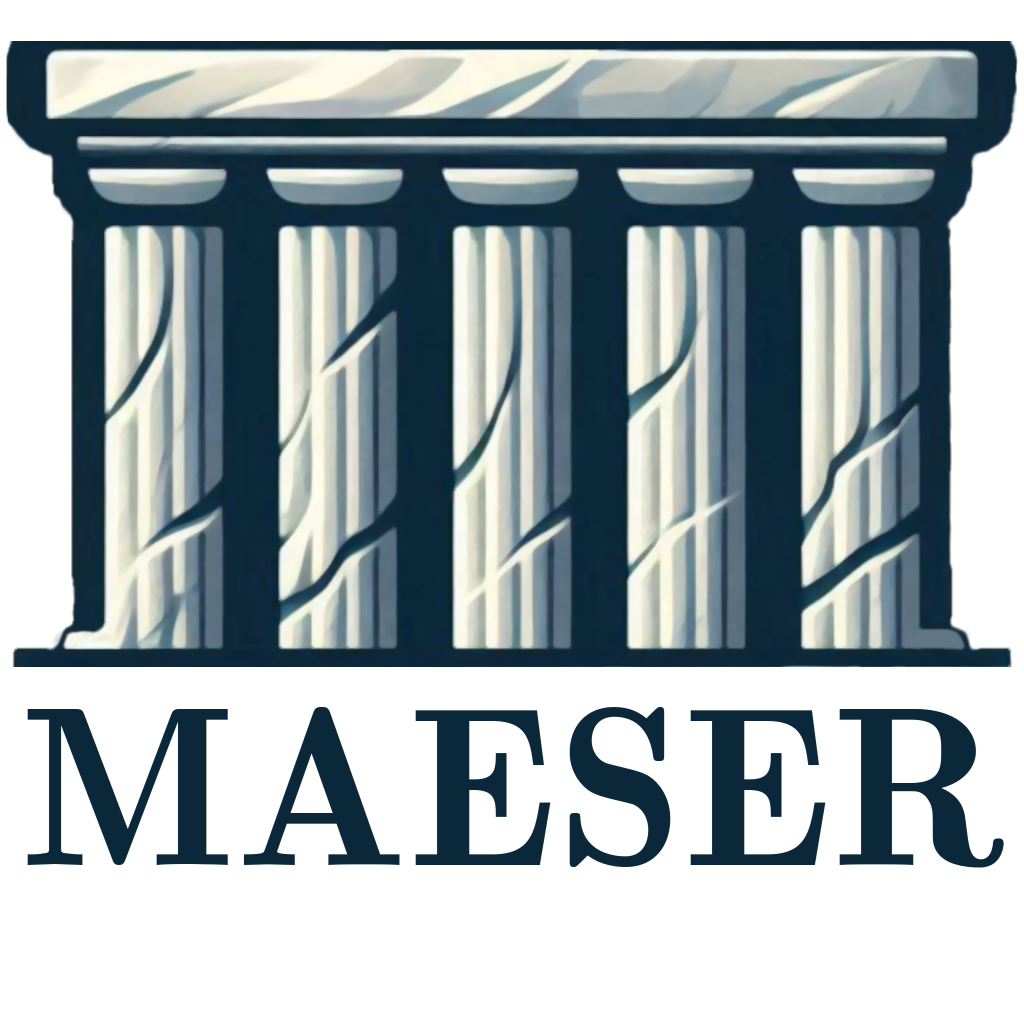7. Library Dependencies & Their Roles in Maeser#
An at-a-glance guide to every major third-party library in Maeser: what it does, why it’s here, and how we leverage it.
7.1. Overview#
Maeser weaves together best-in-class Python libraries to handle:
Vector search & embeddings
Workflow orchestration
LLM API access
Web serving & templating
Authentication & configuration
CLI & developer tooling
Understanding these dependencies empowers you to extend Maeser, debug quickly, and swap components as needed.
7.2. Retrieval & Embeddings#
7.2.1. LangChain#
Role: High-level RAG abstraction layer
Key features used:
Text splitters:
RecursiveCharacterTextSplitterEmbeddings:
OpenAIEmbeddingsVector store wrapper:
FAISSintegration
7.2.2. FAISS (via LangChain)#
Role: High-performance nearest-neighbor search
Use case: Index and query embedding vectors for both Simple and Pipeline RAG pipelines.
7.3. Workflow Orchestration#
7.3.1. LangGraph#
Role: Compose multi-step AI pipelines as directed graphs
Use case: Underpins
get_simple_ragandget_pipeline_rag; foundation for advanced custom graphs.
7.4. LLM & Embedding APIs#
7.4.1. OpenAI Python SDK#
Role: Official client for chat completions & embeddings
Use case: Send prompts to GPT models (e.g.,
gpt-3.5-turbo,gpt-4) and retrieve embeddings when needed.
7.5. 4. Web Framework & Templating#
7.5.1. Flask#
Role: Lightweight WSGI framework for web endpoints
Use case: Hosts chat UI, auth flows, admin dashboards—bootstrapped by
App_Manager.
7.5.2. Jinja2#
Role: HTML templating engine
Use case: Renders dynamic templates (chat interface, login, logs) with theming support.
7.6. Configuration & Environment#
7.6.1. PyYAML#
Role: YAML parsing
Use case: Load
config.yaml(API keys, paths, rate limits, auth settings).
7.6.2. python-dotenv (optional)#
Role:
.envsupport for environment variablesUse case: Override sensitive settings outside of YAML or source control.
7.7. Authentication & User Management#
7.7.1. Github OAth (Handled in user_manager)#
Role: Support for Github login.
Use case: Provide users with the option to sign into the web application with github.
7.7.2. LDAP3 (Handled in user_manager)#
Role: LDAP directory client
Use case:
LDAPAuthenticatorfor enterprise user login.
7.8. CLI & Developer Tooling#
7.8.1. pyinputplus#
Role: Enhanced
input()for CLI menus & validationUse case: Powers the interactive terminal example.
7.8.2. pytest#
Role: Testing framework
Use case: Runs unit tests under
tests/to validate functionality.
7.8.3. Sphinx & MyST Parser#
Role: Documentation generator for RST & Markdown
Use case: Builds the Maeser docs site (
sphinx-docs/) with mixed-format support.
7.9. Optional Integrations#
Poetry: Alternative dependency & venv management
Gunicorn: Production-ready WSGI server that integrates well with Flask.
Docker: Containerization for reproducible deployments
7.10. Best Practices & Tips#
Keep LangChain and OpenAI SDK versions up-to-date.
Swap FAISS for another vector store (e.g., Chroma) by updating only pipeline construction.
Use python-dotenv in dev to keep secrets out of YAML/source.
Configure pre-commit hooks (Black, Flake8, isort) for consistent code style.
